Abstract
Lists of reportable conditions and case definitions are important tools for epidemiologic surveillance. As part of an initiative to encourage occupational disease surveillance systems linked to intervention at the state level, we have proposed a list of target conditions and are developing a set of standard epidemiologic case definitions. Experience gained from state health department pilot projects using SENSOR and other surveillance approaches will be used to promote effective condition-specific surveillance strategies on a wider scale.
Full text
PDF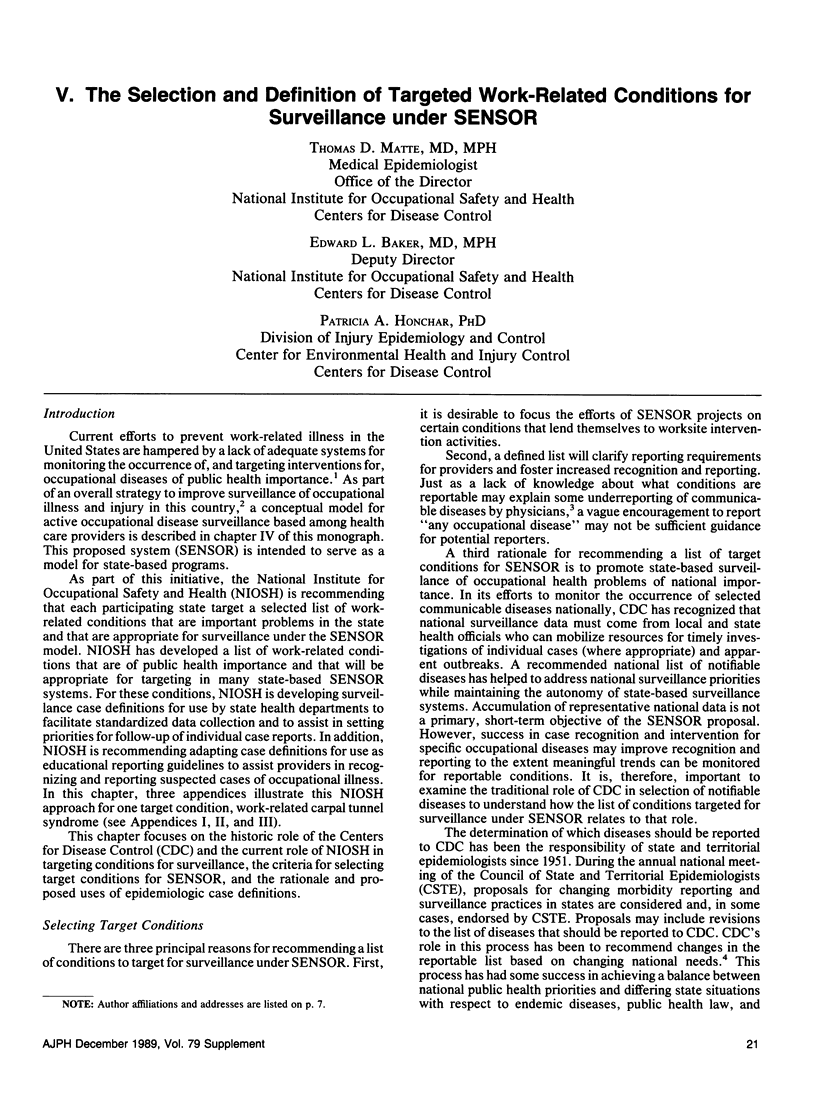
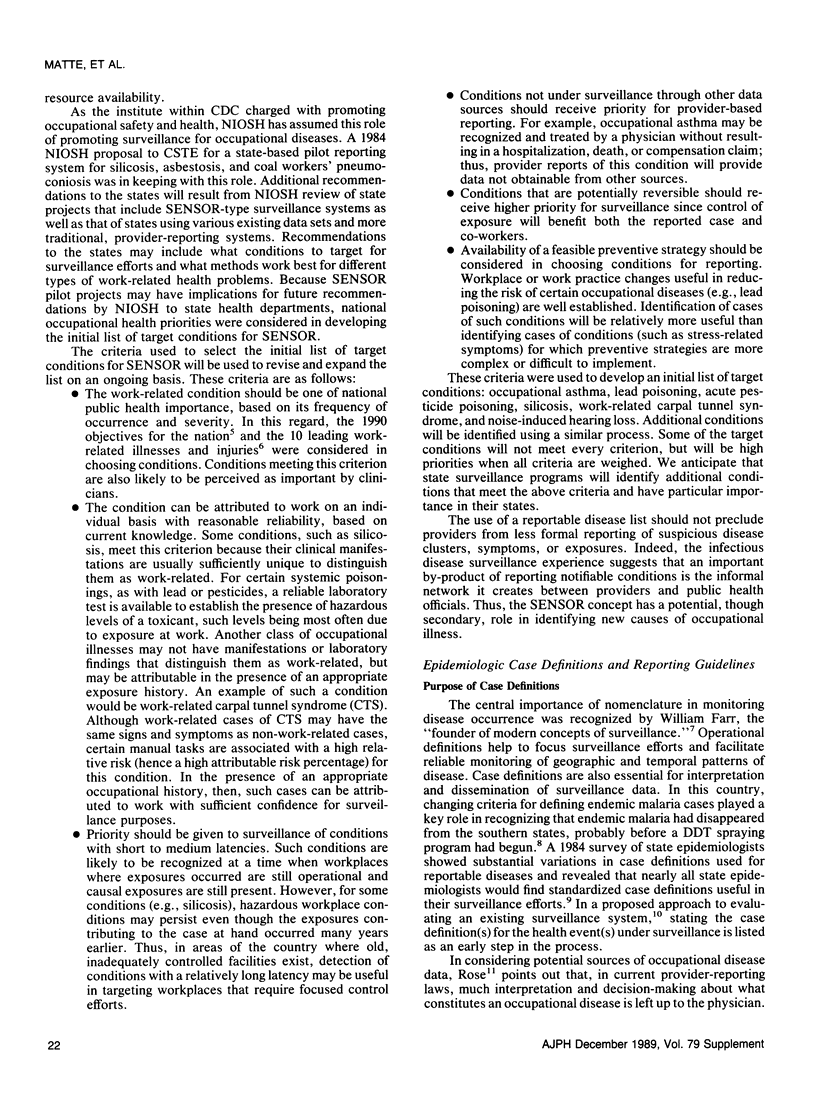
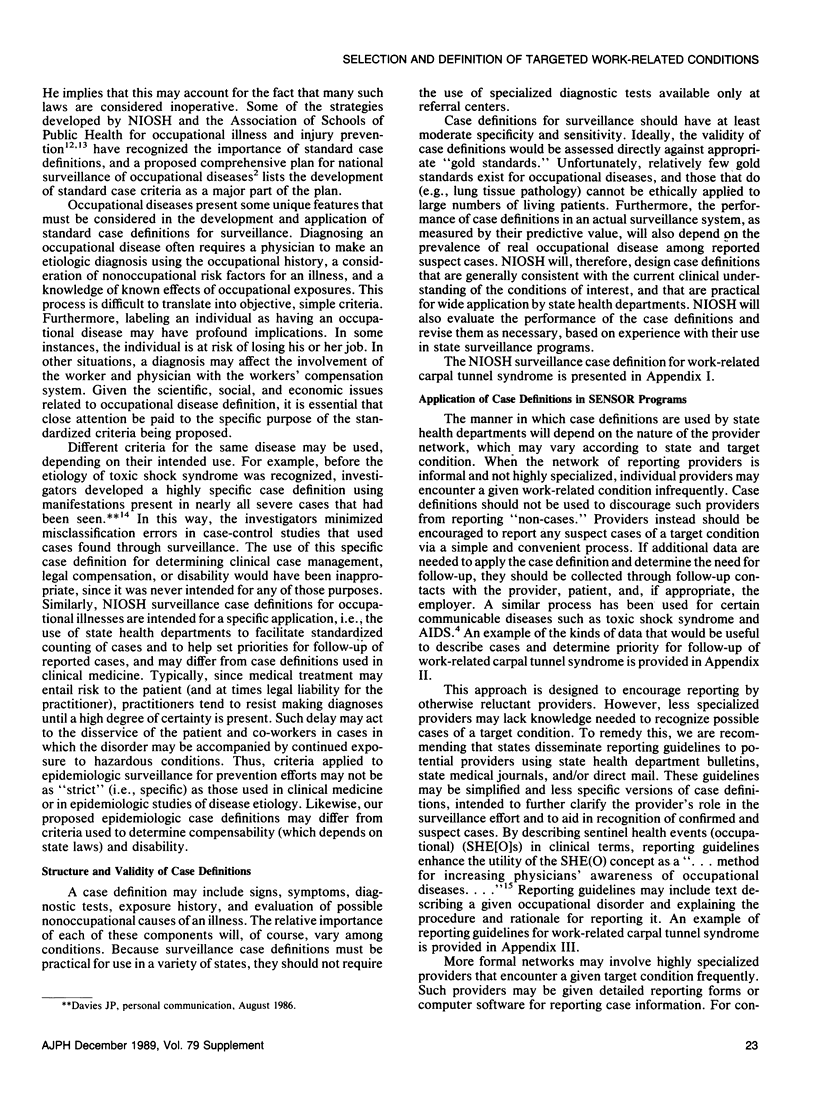
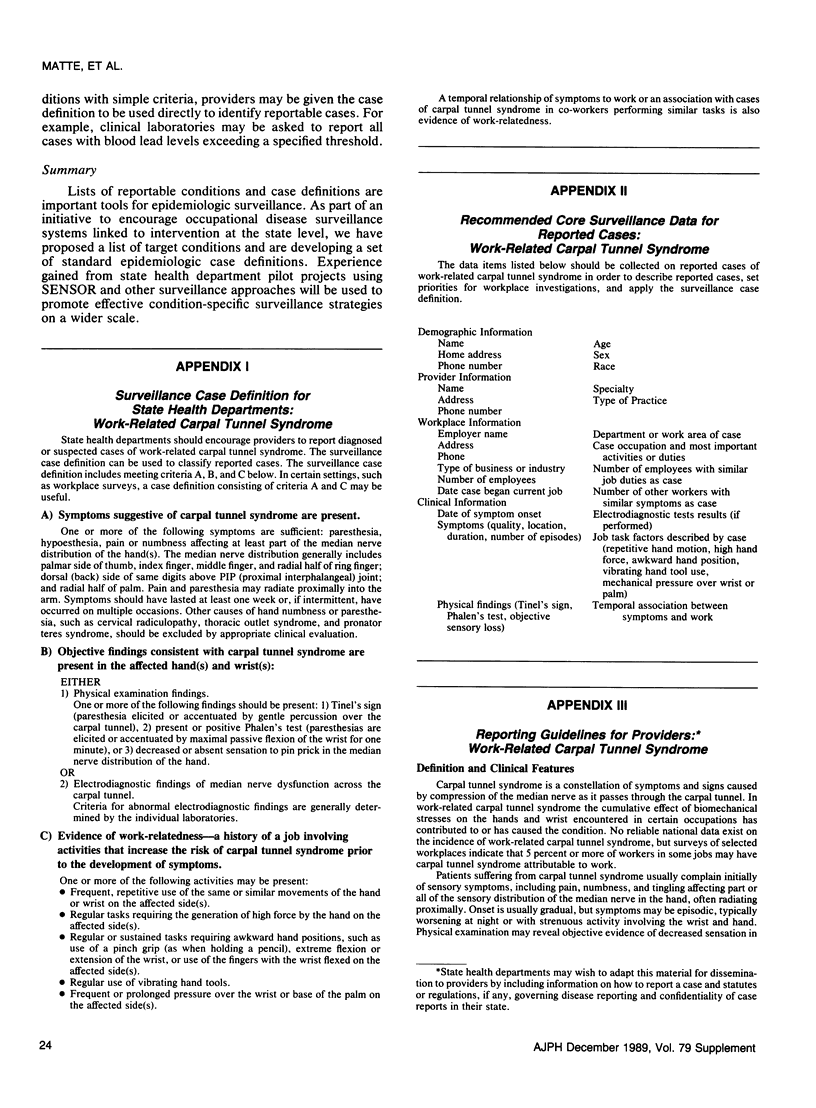
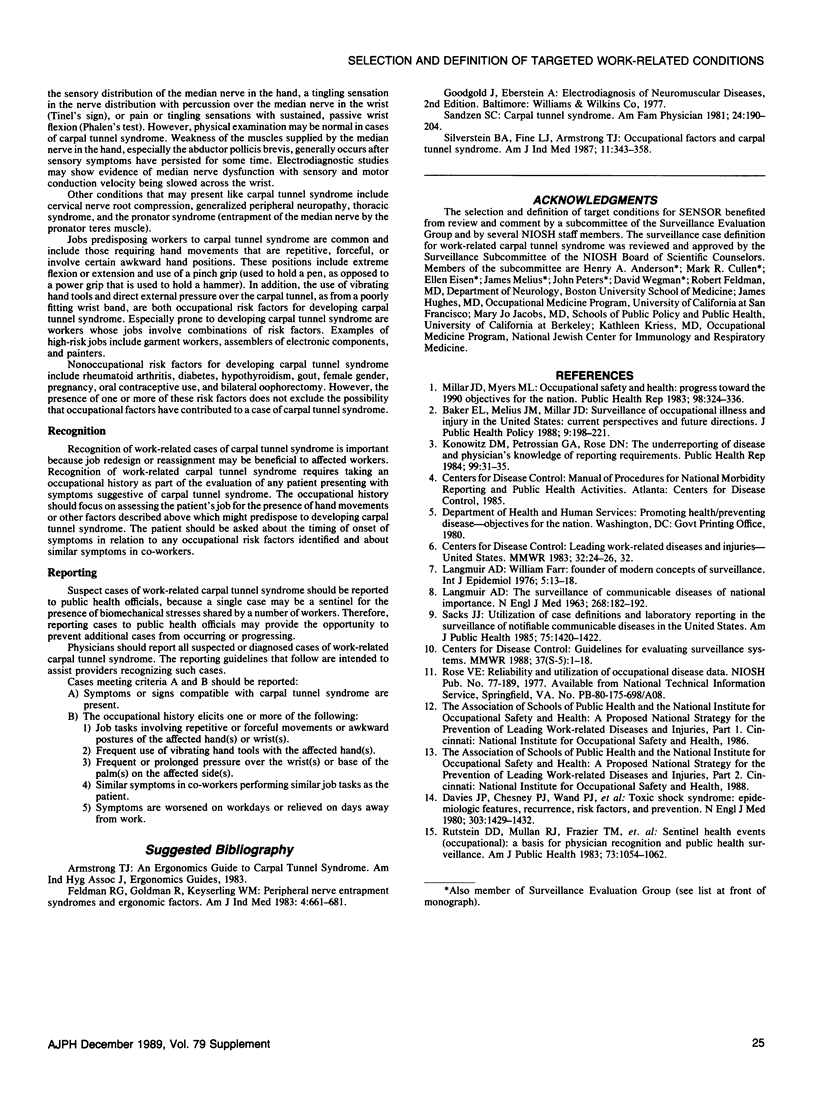
Selected References
These references are in PubMed. This may not be the complete list of references from this article.
- Baker E. L., Melius J. M., Millar J. D. Surveillance of occupational illness and injury in the United States: current perspectives and future directions. J Public Health Policy. 1988 Summer;9(2):198–221. [PubMed] [Google Scholar]
- Davis J. P., Chesney P. J., Wand P. J., LaVenture M. Toxic-shock syndrome: epidemiologic features, recurrence, risk factors, and prevention. N Engl J Med. 1980 Dec 18;303(25):1429–1435. doi: 10.1056/NEJM198012183032501. [DOI] [PubMed] [Google Scholar]
- Feldman R. G., Goldman R., Keyserling W. M. Classical syndromes in occupational medicine. Peripheral nerve entrapment syndromes and ergonomic factors. Am J Ind Med. 1983;4(5):661–681. doi: 10.1002/ajim.4700040508. [DOI] [PubMed] [Google Scholar]
- Konowitz P. M., Petrossian G. A., Rose D. N. The underreporting of disease and physicians' knowledge of reporting requirements. Public Health Rep. 1984 Jan-Feb;99(1):31–35. [PMC free article] [PubMed] [Google Scholar]
- LANGMUIR A. D. The surveillance of communicable diseases of national importance. N Engl J Med. 1963 Jan 24;268:182–192. doi: 10.1056/NEJM196301242680405. [DOI] [PubMed] [Google Scholar]
- Langmuir A. D. William Farr: founder of modern concepts of surveillance. Int J Epidemiol. 1976 Mar;5(1):13–18. doi: 10.1093/ije/5.1.13. [DOI] [PubMed] [Google Scholar]
- Millar J. D., Myers M. L. Occupational safety and health: progress toward the 1990 objectives for the nation. Public Health Rep. 1983 Jul-Aug;98(4):324–336. [PMC free article] [PubMed] [Google Scholar]
- Rutstein D. D., Mullan R. J., Frazier T. M., Halperin W. E., Melius J. M., Sestito J. P. Sentinel Health Events (occupational): a basis for physician recognition and public health surveillance. Am J Public Health. 1983 Sep;73(9):1054–1062. doi: 10.2105/ajph.73.9.1054. [DOI] [PMC free article] [PubMed] [Google Scholar]
- Sacks J. J. Utilization of case definitions and laboratory reporting in the surveillance of notifiable communicable diseases in the United States. Am J Public Health. 1985 Dec;75(12):1420–1422. doi: 10.2105/ajph.75.12.1420. [DOI] [PMC free article] [PubMed] [Google Scholar]
- Sandzén S. C., Jr Carpal tunnel syndrome. Am Fam Physician. 1981 Nov;24(5):190–204. [PubMed] [Google Scholar]
- Silverstein B. A., Fine L. J., Armstrong T. J. Occupational factors and carpal tunnel syndrome. Am J Ind Med. 1987;11(3):343–358. doi: 10.1002/ajim.4700110310. [DOI] [PubMed] [Google Scholar]


